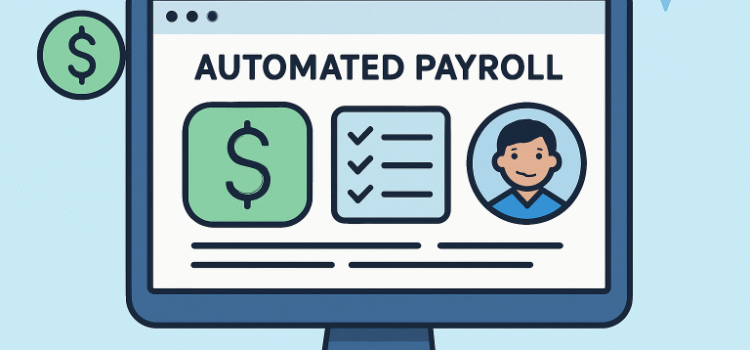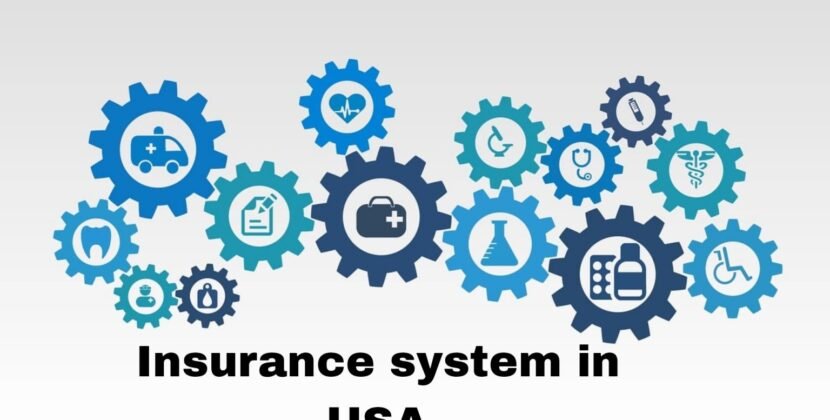As businesses strive to maximize efficiency and reduce operational errors, automating payroll processes has emerged as a vital strategy. Automated payroll helps address the time-consuming and error-prone nature of manual payroll management, allowing business owners to focus more on growth and employee engagement. To find the most suitable solution, consult a provider in your area that matches your organization’s unique requirements and industry needs.
Aside from ensuring timely and accurate pay, payroll automation significantly reduces compliance risks. Payroll platforms now easily integrate with HR and accounting software, improving the overall workflow and providing a better experience for both management and staff. As regulatory environments continually evolve, automating payroll is increasingly seen as essential, not optional, for maintaining operational excellence.
Automated systems also empower employees with self-service tools, streamlining everything from updating personal details to accessing payslips. The result is improved morale and trust, as errors and delays become a thing of the past. Moreover, robust payroll platforms utilize advanced security protocols to protect sensitive information from growing cyber threats, which is critical in today’s digital landscape.
Embracing Automation in Payroll Processing
Payroll represents one of the most critical and sensitive business operations, directly affecting employee satisfaction and compliance. In an era where accuracy, compliance, and efficiency are under constant scrutiny, manual payroll processes quickly show their limitations. Payroll automation addresses these limitations by leveraging technology to automate routine payroll tasks, reduce errors, and ensure compliance with all statutory requirements.
With automation, businesses experience a marked reduction in manual data entry, faster payroll cycles, and minimized risk of penalties for non-compliance. Ultimately, adopting an automated payroll solution serves as an engine for business growth, enabling HR and accounting teams to focus on higher-value strategic activities.
Benefits of Automated Payroll Systems
- Accuracy: Automated payroll systems significantly reduce human error by minimizing reliance on manual data entry and calculations. These systems ensure that salaries, deductions, benefits, and tax withholdings are calculated with precision in accordance with preset formulas and current regulations. As a result, employees are paid accurately and on time, helping maintain financial integrity across the organization. Moreover, automation eliminates inconsistencies caused by human oversight, promoting trust between employees and management while preventing costly reprocessing or reconciliation errors.
- Time Efficiency: Payroll automation drastically reduces the time HR and accounting teams spend on repetitive administrative tasks. Instead of manually calculating wages or preparing compliance reports, HR professionals can focus on higher-value strategic functions such as workforce planning, performance management, or employee engagement. Many automated platforms also feature scheduling tools, direct deposit processing, and integrated reporting dashboards—further streamlining the entire payroll workflow. This increased efficiency not only speeds up processing cycles but also supports smoother month-end or year-end financial closures.
- Compliance: Regulatory compliance is one of the most complex aspects of payroll management. Automated systems are regularly updated to reflect the latest tax laws, labor regulations, and statutory deductions, reducing the risk of non-compliance. For example, when government tax rates or contribution thresholds change, the system automatically applies the new rules without manual intervention. This proactive approach prevents penalties, audits, and legal complications, while giving business leaders confidence that payroll operations remain fully compliant with both local and national standards.
- Employee Satisfaction: An accurate and timely payroll process directly impacts employee morale and trust. When workers are consistently paid on schedule and can easily access their pay information, satisfaction and engagement naturally improve. Many modern payroll systems include employee self-service portals that allow staff to view payslips, update personal details, and track leave balances anytime. This transparency empowers employees, reduces HR inquiries, and fosters a culture of accountability and fairness throughout the organization.
- Cost Savings: Automation reduces labor hours spent on manual payroll processing and error correction, resulting in substantial savings. It reduces the need for paper-based documentation and lowers administrative overhead by consolidating multiple payroll functions into one system. Additionally, by avoiding fines from compliance errors and improving operational accuracy, businesses can redirect savings toward strategic growth initiatives. Over time, the investment in payroll automation delivers a strong return through increased efficiency and fewer resource expenditures.
Challenges in Implementing Payroll Automation
- Integration Issues: Integrating a new payroll platform with existing HR, accounting, and enterprise resource planning (ERP) systems can be challenging. Compatibility issues may arise, especially if legacy systems use outdated technology or data formats. Without proper integration, businesses risk data silos and inconsistencies across departments. A well-planned integration strategy—often involving IT specialists and vendor support—is essential to ensure smooth data synchronization and optimal system performance.
- Data Security: Payroll data includes sensitive information such as employee bank details, tax identification numbers, and salary records, making it a prime target for cyber threats. Businesses must adopt robust cybersecurity measures, including encryption, multi-factor authentication, and regular audits, to safeguard employee information. Compliance with data privacy regulations such as the GDPR or local equivalents is also critical. Establishing strong access controls and conducting regular security training can further mitigate the risks associated with digital payroll systems.
- Compliance: While automation helps maintain compliance, ongoing monitoring is still required. Regulatory environments change frequently, and even the most advanced systems need timely updates and human oversight to ensure alignment with the latest tax or labor standards. Businesses must work closely with their payroll providers to confirm that updates are implemented promptly and accurately. Failure to do so can lead to costly fines and damage to the company’s reputation.
- Employee Training: Transitioning from manual processes to automated systems requires a thoughtful change management approach. Employees may resist new technologies or feel uncertain about how to use them effectively. Comprehensive training sessions should be provided to HR staff and payroll administrators to ensure they understand the full functionality of the system. Clear communication about the benefits and long-term efficiencies of automation can also ease resistance and encourage adoption across departments.
Best Practices for Successful Implementation
- Conduct a Needs Assessment: Before adopting a payroll automation system, businesses should perform a detailed assessment of their current payroll processes. This evaluation should identify inefficiencies, compliance risks, and specific pain points that automation can address. Understanding these factors helps organizations set clear objectives for system selection and implementation, ensuring the new solution aligns with operational needs and long-term goals.
- Choose the Right Software: Selecting the right payroll software is crucial to achieving a smooth transition. Businesses should evaluate potential platforms based on scalability, user-friendliness, integration capabilities, and vendor support. A solution that can grow with the organization and adapt to changing workforce dynamics will deliver lasting value. Additionally, businesses should consider software that offers cloud-based access, mobile functionality, and advanced reporting tools for greater flexibility and insight.
- Ensure Compliance: Compliance should remain a top priority when choosing and maintaining a payroll automation system. The selected solution must automatically update in response to legislative changes to tax codes, minimum wage laws, and Social Security requirements. Regular audits and vendor communication are essential to confirm that the system continues to operate within regulatory frameworks. This proactive approach not only avoids legal risks but also enhances the company’s reputation for ethical and lawful employment practices.
- Train Employees: Comprehensive employee training ensures smooth adoption and maximizes the benefits of automation. Training should cover everything from system navigation to troubleshooting common issues. Providing ongoing learning opportunities—such as refresher courses or access to user manuals—can help employees stay confident and efficient. Involving staff in the implementation process also promotes ownership and boosts engagement during the transition period.
- Monitor and Evaluate: Even after implementation, continuous monitoring is vital to ensure long-term success. Businesses should regularly track performance metrics such as processing speed, error rates, and employee feedback to gauge system effectiveness. Any issues identified should be addressed promptly through system updates or process improvements. Regular evaluations ensure the payroll system remains aligned with organizational goals and technological advancements, securing lasting value and efficiency.
Future Trends in Payroll Automation
- AI Integration: Advanced analytics and predictive algorithms provide deeper insights into payroll data and HR trends.
- Blockchain Technology: Adds transparency and tamper-proofing to payroll transactions, mitigating fraud risks.
- Mobile Accessibility: Allows anytime, anywhere access to payroll information, enhancing convenience for remote and hybrid workforces.
- Real-Time Processing: Delivers instant calculations, faster payments, and real-time reporting.
As digital transformation accelerates, these trends are shaping the future of workforce management, as CNBC reports. These emerging technologies not only optimize efficiency but also bolster compliance and data protection across payroll operations. As more organizations embrace digital innovation, they strengthen accuracy, transparency, and employee confidence.
Conclusion
Automating payroll is no longer a luxury—it’s a necessity for businesses aiming to improve efficiency, achieve full compliance, and foster employee satisfaction in a competitive market. By embracing technology and following best practices, organizations can transform payroll from a burdensome task into a streamlined, strategic advantage, supporting business growth and workforce happiness for years to come.













